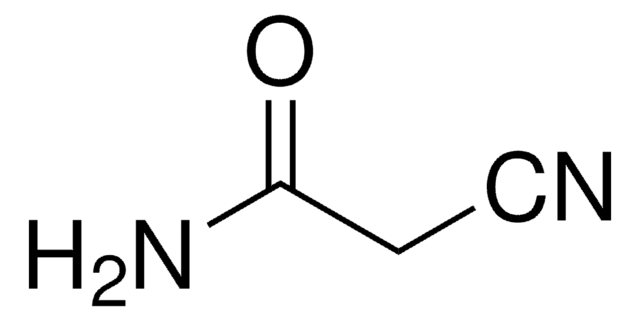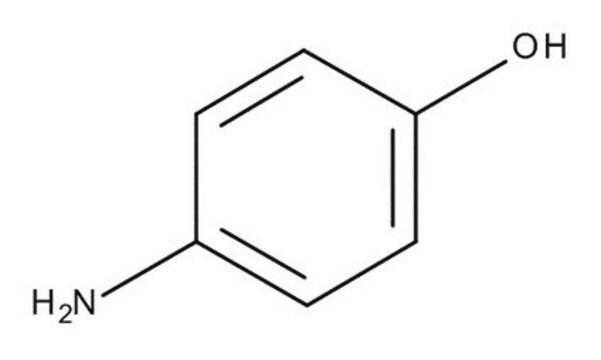C88505
Cyanoacetic acid
99%
Synonyme(s) :
2-Cyanoacetic acid, Cyanoethanoic acid, Malonic mononitrile, Monocyanoacetic acid
About This Item
Produits recommandés
Pression de vapeur
0.1 mmHg ( 100 °C)
Niveau de qualité
Pureté
99%
Forme
crystals
Point d'ébullition
108 °C/0.15 mmHg (lit.)
Pf
64-70 °C (lit.)
Solubilité
H2O: 50 mg/mL, clear, colorless to very faintly yellow
Chaîne SMILES
OC(=O)CC#N
InChI
1S/C3H3NO2/c4-2-1-3(5)6/h1H2,(H,5,6)
Clé InChI
MLIREBYILWEBDM-UHFFFAOYSA-N
Vous recherchez des produits similaires ? Visite Guide de comparaison des produits
Application
- Along with acetic anhydride for cyanoacetylation of various pyrroles, indoles, and aniline derivatives. It can also be used in other reactions such as cyclizations, syntheses of coumarins and other heterocycles.
- To prepare of key intermediate via Knoevenagel condensation in the total synthesis of 5-acetamido-substituted melatonin derivatives as MT3 receptor ligands.
- In the synthesis of aminopyrrolinone derivatives by reacting Ugi adducts of cyanoacetic acid and aromatic aldehydes.
Mention d'avertissement
Danger
Mentions de danger
Classification des risques
Acute Tox. 4 Inhalation - Acute Tox. 4 Oral - Eye Dam. 1 - Skin Corr. 1B
Risques supp
Code de la classe de stockage
8A - Combustible corrosive hazardous materials
Classe de danger pour l'eau (WGK)
WGK 1
Point d'éclair (°F)
224.6 °F - closed cup
Point d'éclair (°C)
107 °C - closed cup
Équipement de protection individuelle
Eyeshields, Faceshields, Gloves, type P3 (EN 143) respirator cartridges
Certificats d'analyse (COA)
Recherchez un Certificats d'analyse (COA) en saisissant le numéro de lot du produit. Les numéros de lot figurent sur l'étiquette du produit après les mots "Lot" ou "Batch".
Déjà en possession de ce produit ?
Retrouvez la documentation relative aux produits que vous avez récemment achetés dans la Bibliothèque de documents.
Notre équipe de scientifiques dispose d'une expérience dans tous les secteurs de la recherche, notamment en sciences de la vie, science des matériaux, synthèse chimique, chromatographie, analyse et dans de nombreux autres domaines..
Contacter notre Service technique



![1,8-Diazabicyclo[5.4.0]undéc-7-ène 98%](/deepweb/assets/sigmaaldrich/product/structures/120/564/5b373e23-1624-489c-8efb-692de0f96ffb/640/5b373e23-1624-489c-8efb-692de0f96ffb.png)




